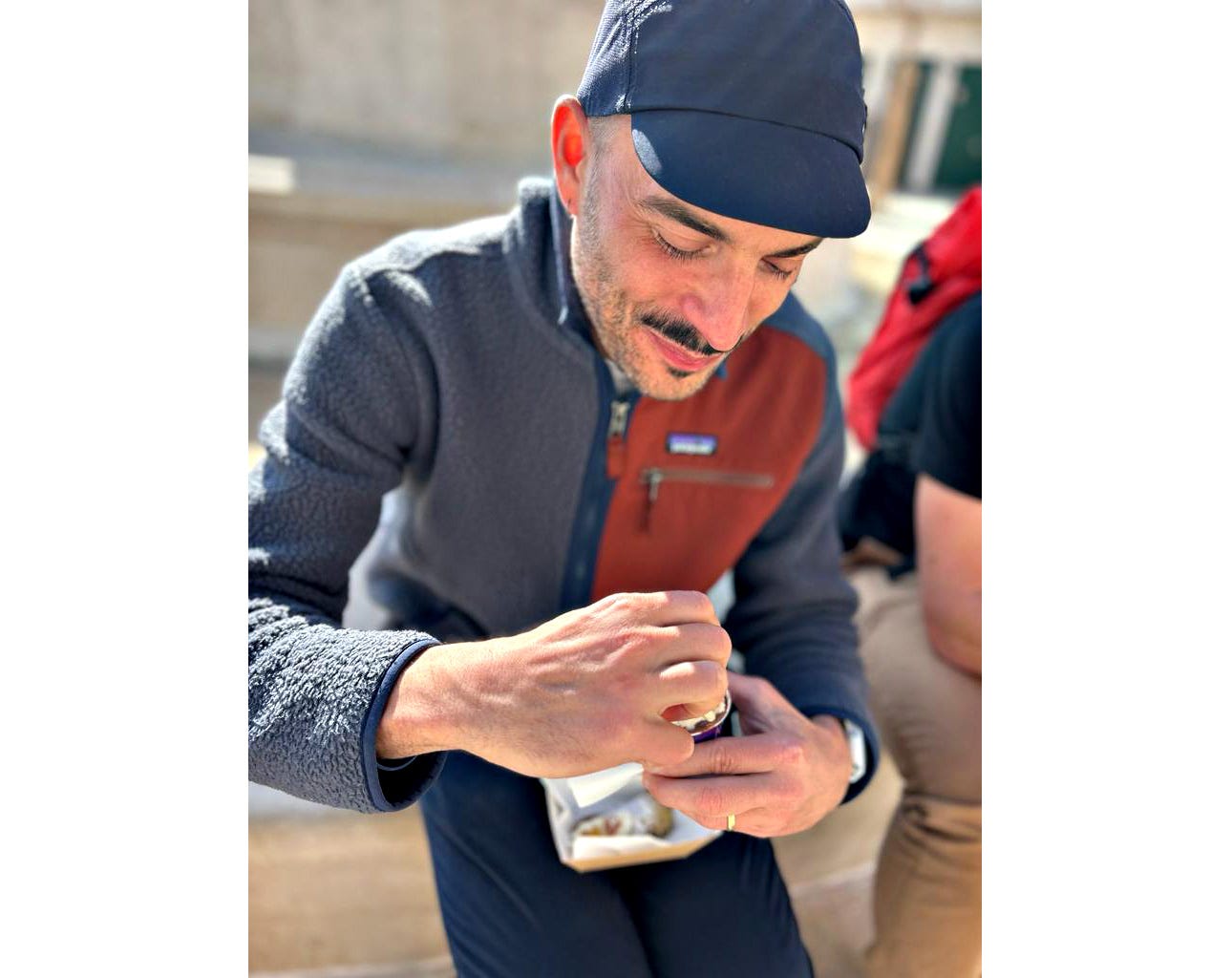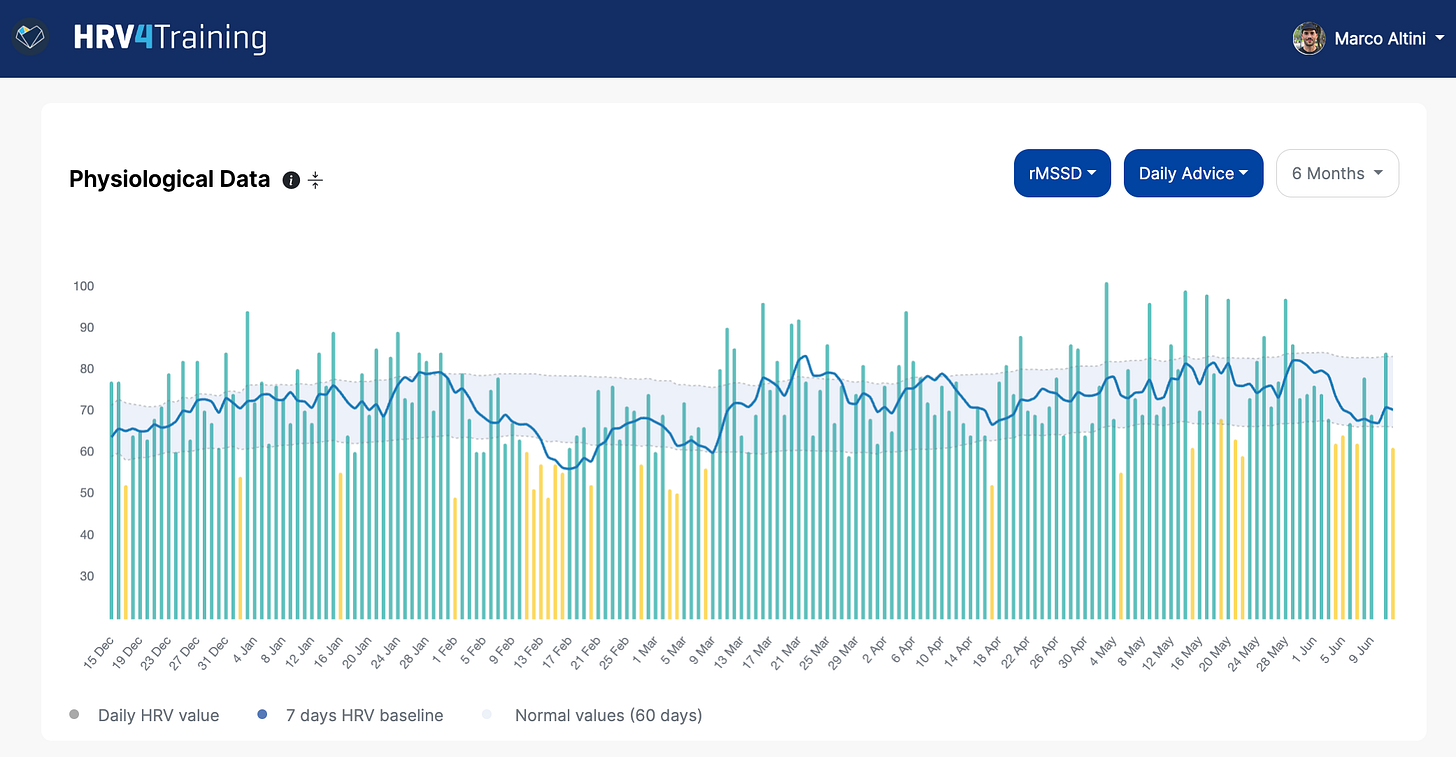[TrainingTalk] Changing Periodization
switching things up for the next year
My running year ends in May, the time of what I now consider my main event (a 100 km race back in Italy, still unfinished business). At this point, I normally evaluate how things went, and try to make some adjustments, with two goals in mind: 1) staying healthy (in broader terms, and specifically in the context of running as well, i.e. injury-free), 2) possibly improving as a runner. Point 2) is nice to have, but comes quite far after 1), which motivates some of the changes I will implement this year, despite having made a lot of progress in the past 12 months.
What went well
In general, this year my performance was beyond my expectations. I was able to run a lot, run “fast” (please forgive me), recover quickly, and enjoy my time both in terms of focused training and in terms of random adventures. I had abandoned sub-3-hour marathon dreams a long time ago, but a lot has changed this year, for the better (see this blog for the main takeaways from my journey).
In terms of periodization, I used a quite standard block periodization (we could also call it linear periodization), which I described in more detail here and here. The way this work is that I start with a VO2max block to get a bit quicker, then move to a threshold and steady-state block as I approached my target event (the marathon, hence the inverse periodization).
I repeated this process twice during the year, from June to November, when my first marathon was, and then again from December to April, when my second marathon was. Then, I did 2 months of training specifically for the 100 km ultramarathon.
Focusing on one thing at a time (e.g. speed, then sustaining that speed for longer, then training for the demands of the race), worked quite well for me, and I do like this type of periodization.
However, it wasn’t all smooth sailing, which brings us to the next point.

What didn’t go well
During the first cycle, between June and November, I often felt broken, and sometimes had to slow down or take 2 days off to get over a few niggles. I think I got lucky and never got a proper injury, but I didn’t like how I was progressing.
During the second cycle, between December and April, I also experienced similar issues, some of them staying with me for many weeks. I skipped a few races that I had planned, until eventually, I did break (hamstring strain at the last turn of a half marathon, see pace plot below, where I had to walk it to the finish line).
The psychological implications of an injury are never worth it, but I think that regardless of the injury, far too many times during the year I did not feel healthy: I could train and even train hard enough, but I would have constant niggles bothering me while sitting on my desk working, while doing groceries, etc. - to the point that it would feel weird to have no niggles and just feel good physically for more than a week.
This is exactly what I want to avoid this year, and why I am changing the way I train.
What caused the issues?
Keeping in mind that randomness is always an important part of life, training, and injuries, I do think part of the issues come from a combination of 1) my personality 2) the periodization I used, and also how these two factors play together.
For example, I rarely had problems when in the “VO2max block” of my periodization, where high-intensity sessions are quite short, and the rest of the training is very easy. On the other hand, moving towards a threshold and steady-state block, I tend to accumulate way too much training at higher intensities, and start to suffer a lot from a muscular point of view (my main weakness). Combine training that includes a lot of high intensity (e.g. long threshold sessions a few days after a long tempo run), with a tendency to overdo things, and you get what you expect, i.e. injuries or other problems.
Another reason why I think this type of periodization ended up being problematic for me, is that it made me feel like I was neglecting certain aspects of training (e.g. doing only short intervals for months, then doing only threshold or steady-state), and as a sort of compensatory mechanism, I would maybe do too much of that high-intensity training that I had planned in a given phase.
Below is how I will try to address these issues for the next year.
The new plan
I thought about this quite a bit, and eventually, thanks also to the feedback of trusted friends and coaches, I decided to go for the following, for at least the entire year:
2 weeks microcycles instead of 1 week, with the idea of packing less in a microcycle.
non-linear periodization, i.e. do a bit of everything every 2 weeks, instead of focusing on one aspect of training at a time. This will be the main change.
more variability in weekly training, i.e. instead of very big sessions followed by many slogs, I will try adding small bits of intensity (e.g. strides, hill sprints, 10-15’ steady, etc.) multiple days per week, and keeping the main sessions less demanding - knowing myself, this is a bit wishful thinking, but I’m throwing it out there regardless.
4 days between hard sessions, at least (it used to be 3).
1 day off running per week.
In practical terms, this means that my 2-week microcycles over the year will look similar, including a VO2max session (e.g. 400s or 800s), a threshold session (e.g. 2 or 3km reps), a steady-state/tempo session (e.g. 15-35km with ~20-25 km at marathon pace), a long, easy run (e.g. 30-60 km), and a day off per week. The focus might change a bit at times, depending on when the race is, but the idea is to keep it quite standard, with the main exception of the last 2 months before the 100 km (April - May), in which I will do race-specific training (and less intensity).
I am hoping to stay healthier this way, maintaining more variability in training, and without neglecting anything for more than a week or ten days. Other changes I had made in the past will stay: running trails as frequently as possible, running hills as frequently as possible, strength training twice per week, plyometrics after hard sessions.
I think that the training I have done last year (i.e. block periodization) was what I needed to make a good jump in performance following a few years with high volume but very little intensity due to other injuries I had experienced in the past.
However, now that I am more or less where I want to be in terms of performance, this different type of periodization might allow me to 1) stay healthy 2) maintain or improve a bit performance. Or to rephrase, given that I am happy with my current performance, and I am not aiming at e.g. a faster 10 km or marathon, I might need to be less aggressive in terms of high-intensity blocks, or high-risk high-reward situations. I also think that for my main goal (100 km race), the type of improvements I need are in the 1-3 years timeframe (e.g. changes in running economy following years of high volume and high-intensity training), and therefore staying healthy and consistent with training are the main priorities. Finally, I also think that I should train my weaknesses (i.e. maintaining marathon pace for the required time / distance without excessive muscular breakdown) all year round, not just before a race, and I am looking forward to seeing if maintaining that stimulus will lead to further improvements. Or at least those are my thoughts right now.
Please feel free to comment and provide your input/view, always happy to challenge these assumptions and talk training, thank you for reading!
Marco holds a PhD cum laude in applied machine learning, a M.Sc. cum laude in computer science engineering, and a M.Sc. cum laude in human movement sciences and high-performance coaching.
He has published more than 50 papers and patents at the intersection between physiology, health, technology, and human performance.
He is co-founder of HRV4Training, advisor at Oura, guest lecturer at VU Amsterdam, and editor for IEEE Pervasive Computing Magazine. He loves running.
Social:








How long was your VO2max block in the past?
Hey Marco! Very intersting reading your insights as always. Have you talked about how you include plyometrics in your training previously? You mentioned it in this post but I'm not sure if you have talked about it in detail before.